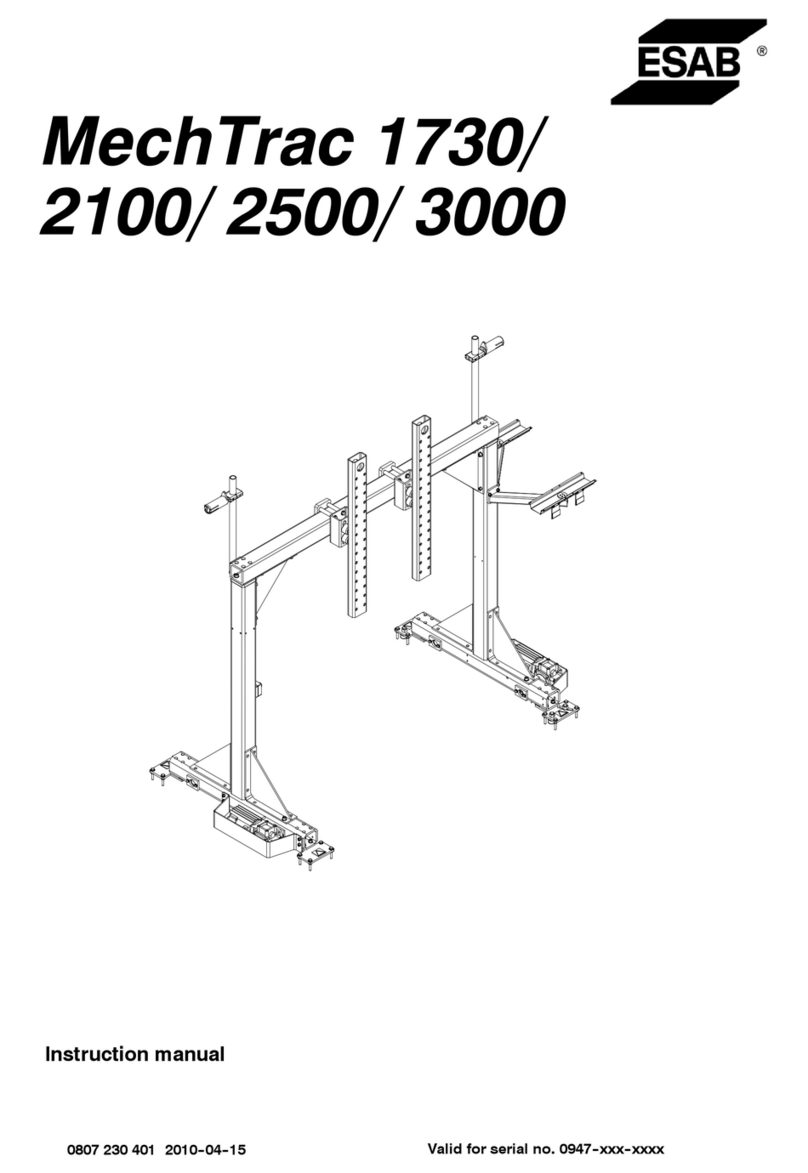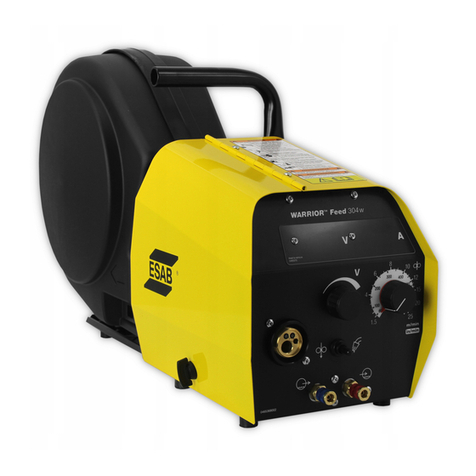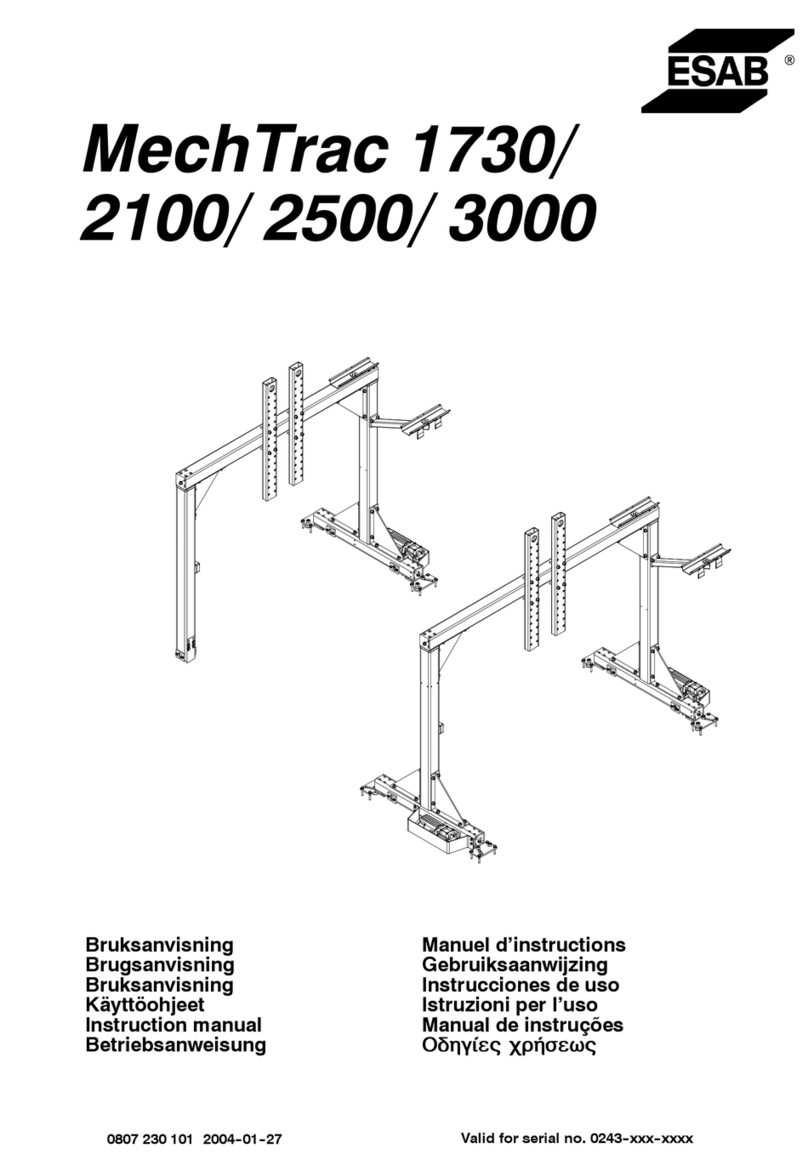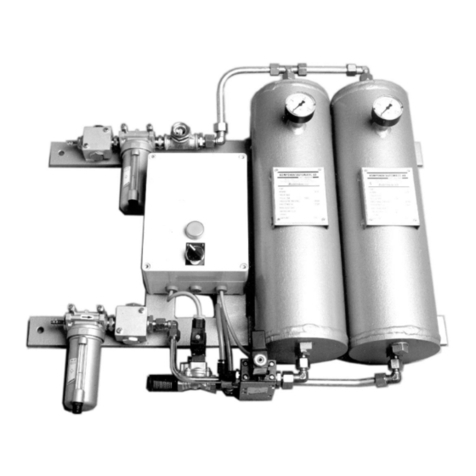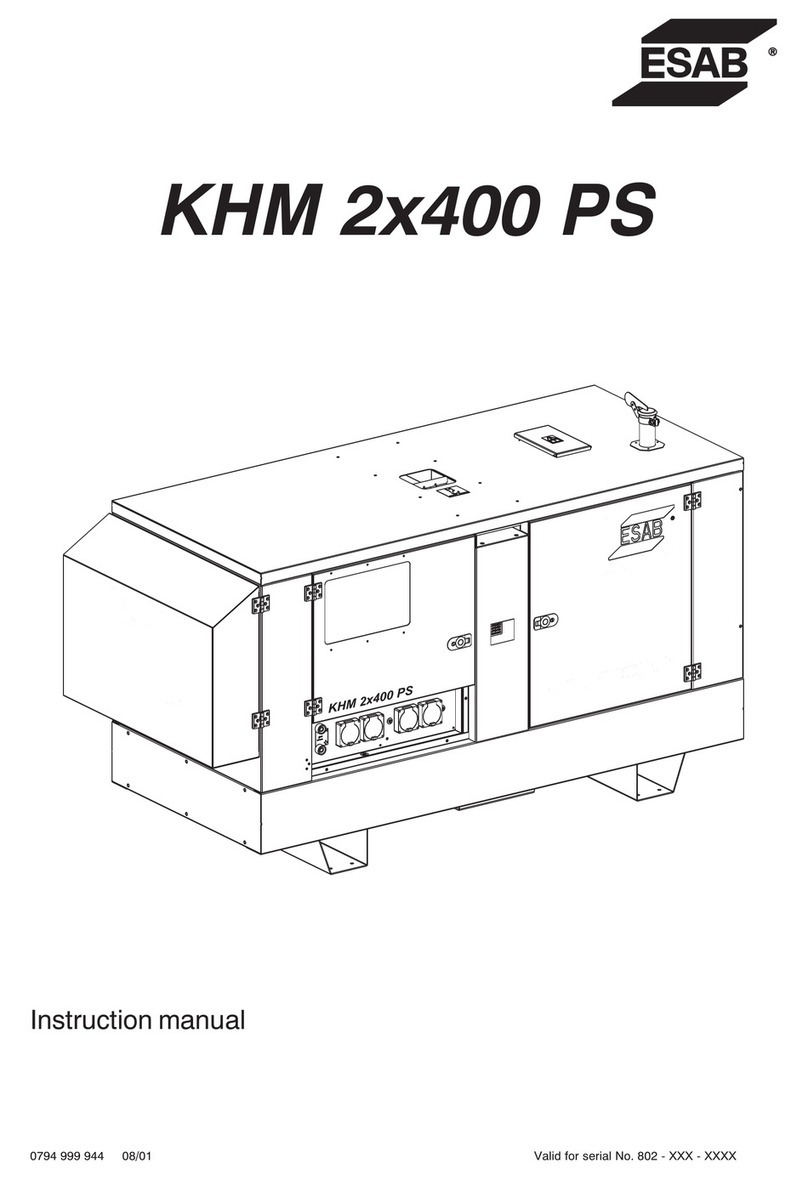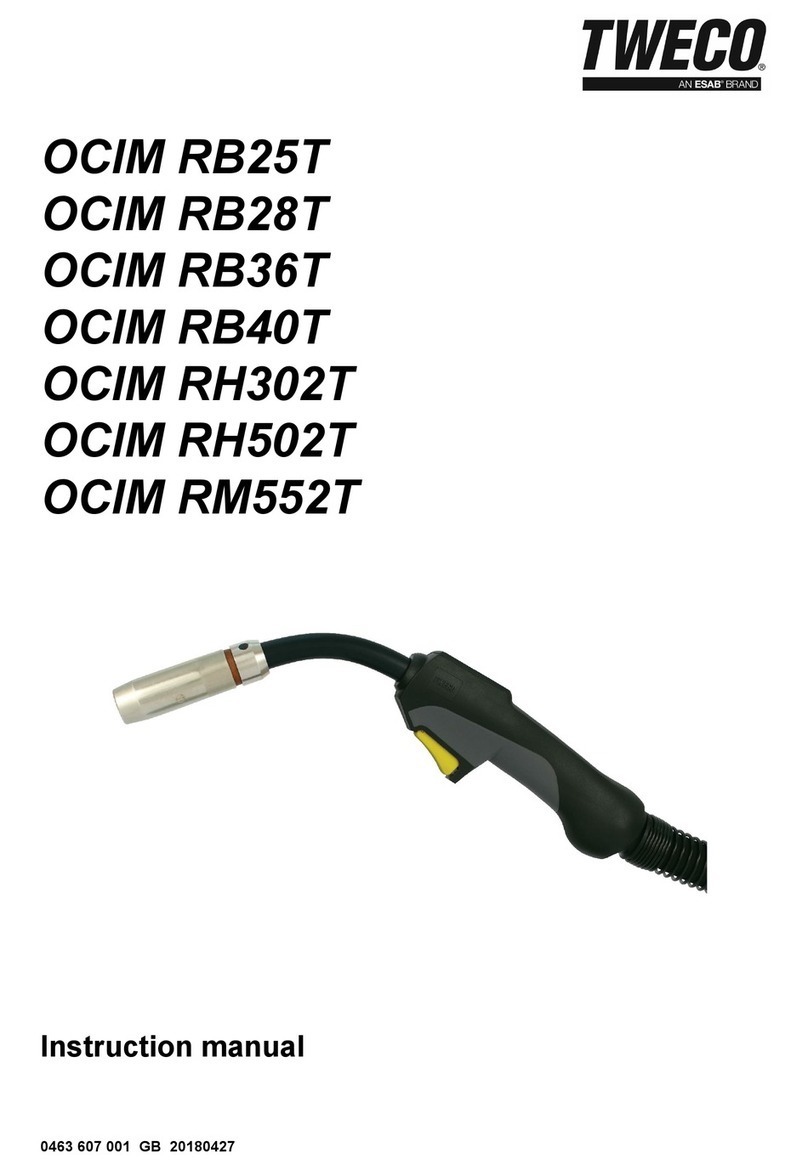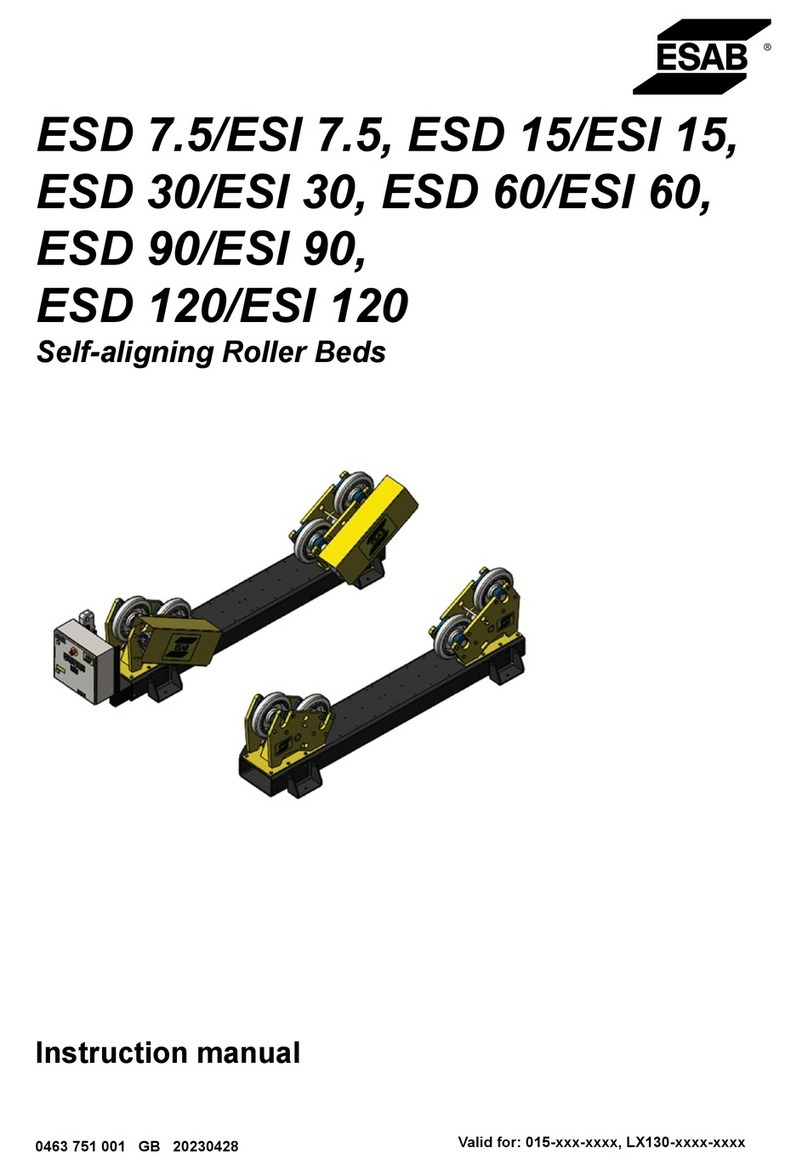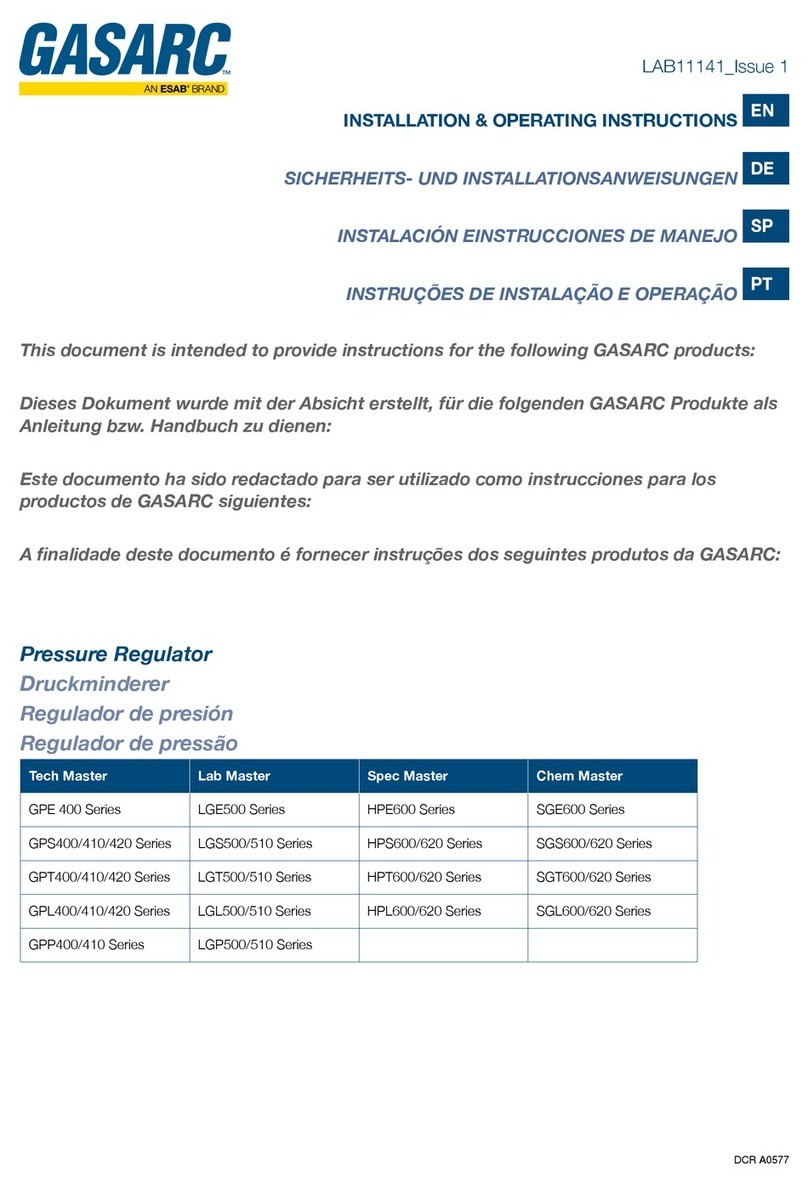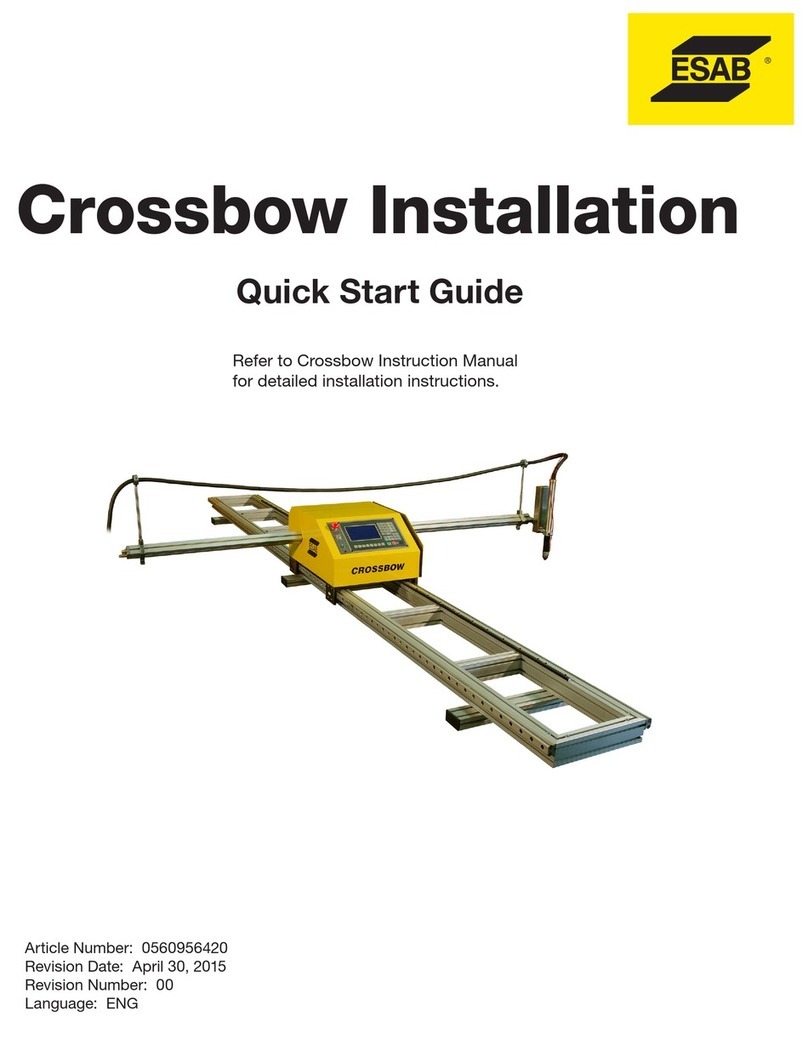
TABLE OF CONTENTS
0463 898 001 -2- © ESAB AB 2022
1 SAFETY ...................................................................................................................................... 4
1.1 Meaning of symbols.................................................................................................... 4
1.2 Safety precautions ...................................................................................................... 4
1.3 User responsibility ...................................................................................................... 8
1.4 California proposition 65 warning ............................................................................. 10
2 INTRODUCTION......................................................................................................................... 11
2.1 Equipment.................................................................................................................... 11
2.2 Purpose and function of roller beds.......................................................................... 11
2.3 Terminology used in this manual............................................................................... 11
3 TECHNICAL DATA ..................................................................................................................... 12
3.1 ECD/ECI 7.5.................................................................................................................. 12
3.1.1 Drive unit ECD 7.5.............................................................................................. 12
3.1.2 Drive unit ECI 7.5 ............................................................................................... 13
3.2 ECD/ECI 15................................................................................................................... 14
3.2.1 Drive unit ECD 15............................................................................................... 14
3.2.2 Idler unit ECI 15.................................................................................................. 15
3.3 ECD/ECI 30................................................................................................................... 16
3.3.1 Drive unit ECD 30............................................................................................... 16
3.3.2 Idler unit ECI 30.................................................................................................. 17
3.4 ECD/ECI 60................................................................................................................... 18
3.4.1 Drive unit ECD 60............................................................................................... 18
3.4.2 Idler unit ECI 60.................................................................................................. 19
3.5 ECD/ECI 90................................................................................................................... 20
3.5.1 Drive unit ECD 90............................................................................................... 20
3.5.2 Idler unit ECI 90.................................................................................................. 21
3.6 ECD/ECI 120................................................................................................................. 22
3.6.1 Drive unit ECD 120............................................................................................. 22
3.6.2 Idler unit ECI 120................................................................................................ 23
4 INSTALLATION........................................................................................................................... 24
4.1 Location........................................................................................................................ 24
4.2 Lifting instructions ...................................................................................................... 24
4.3 Adjusting the wheel stands ........................................................................................ 25
4.4 Adjusting the included angle ..................................................................................... 26
4.5 Installation procedure ................................................................................................. 26
4.6 PEK setup .................................................................................................................... 27
4.7 Roller bed configurations ........................................................................................... 29
5 OPERATION ............................................................................................................................... 30
5.1 Roller bed details ........................................................................................................ 30
5.2 Control panel ............................................................................................................... 30
5.3 Wireless remote - control pendant ............................................................................ 31
5.4 Switch the mains power on ........................................................................................ 32
5.5 Operating the roller beds............................................................................................ 33
5.6 Operation safety .......................................................................................................... 33
5.7 Welding......................................................................................................................... 35
